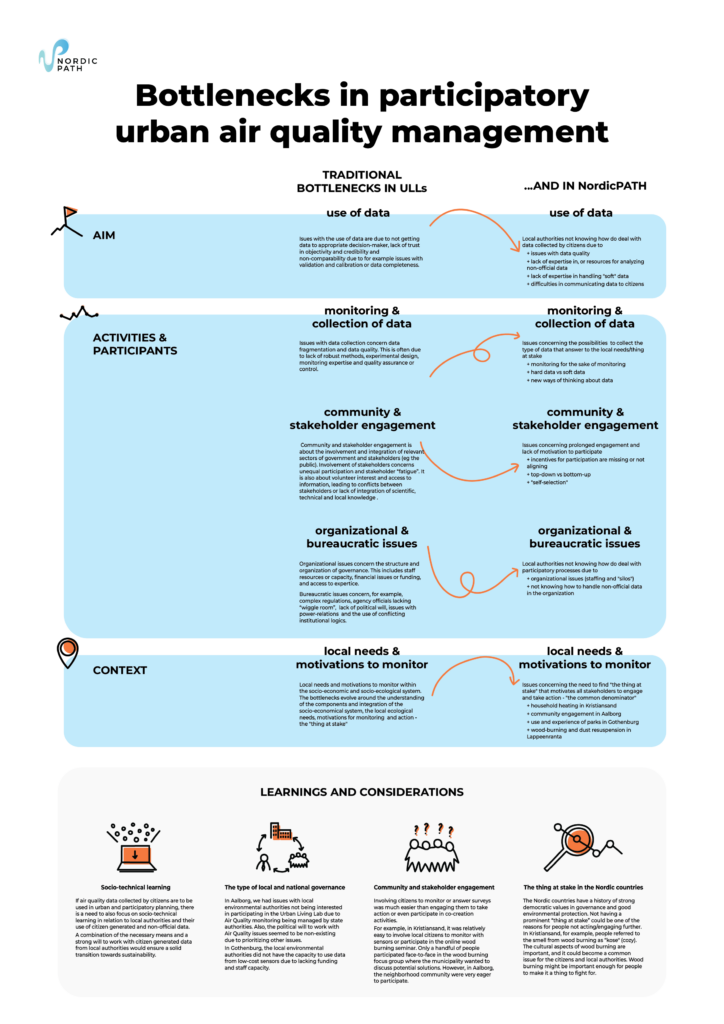As part of the mid-term evaluation of the project, NordicPATH prepared a series of posters to present some of the research activities we have initiated in our attempt to co-create more sustainable Nordic cities. Today we would like to introduce you to the third of them which focuses on the bottlenecks we have found around the management of participatory urban air quality activities. You can also check the first one here and the second one here.
Like in any Urban Living Labs, the ones of the NordicPATH project promote participatory activities with a variety of actors. In particular, our activities aim to engage engage citizens, policy-makers, experts and industries in activities for the co-creation of urban solutions to improve the air quality in our pilot cities (Kristiansand in Norway, Lappeenranta in Finland, Aalborg in Denmark, and Gothenburg in Sweden). However, throughout our experience, we have come across a number of bottlenecks. That is barriers, obstacles and impediments towards that goal.
Some of the most common bottlenecks in Urban Living Labs (ULLs) can be categorized according to 1) the use of data, 2) the monitoring and collection of data, 3) the community and stakeholder engagement, 4) the organizational and bureaucratic issues, 5) the local needs and motivations to monitor data. Grounding on literature, the poster establishes a comparison between traditional bottlenecks that have been commonly identified in Urban Living Labs, and how they have been particularly present for us in NordicPATH.

Pubished by vitaller
